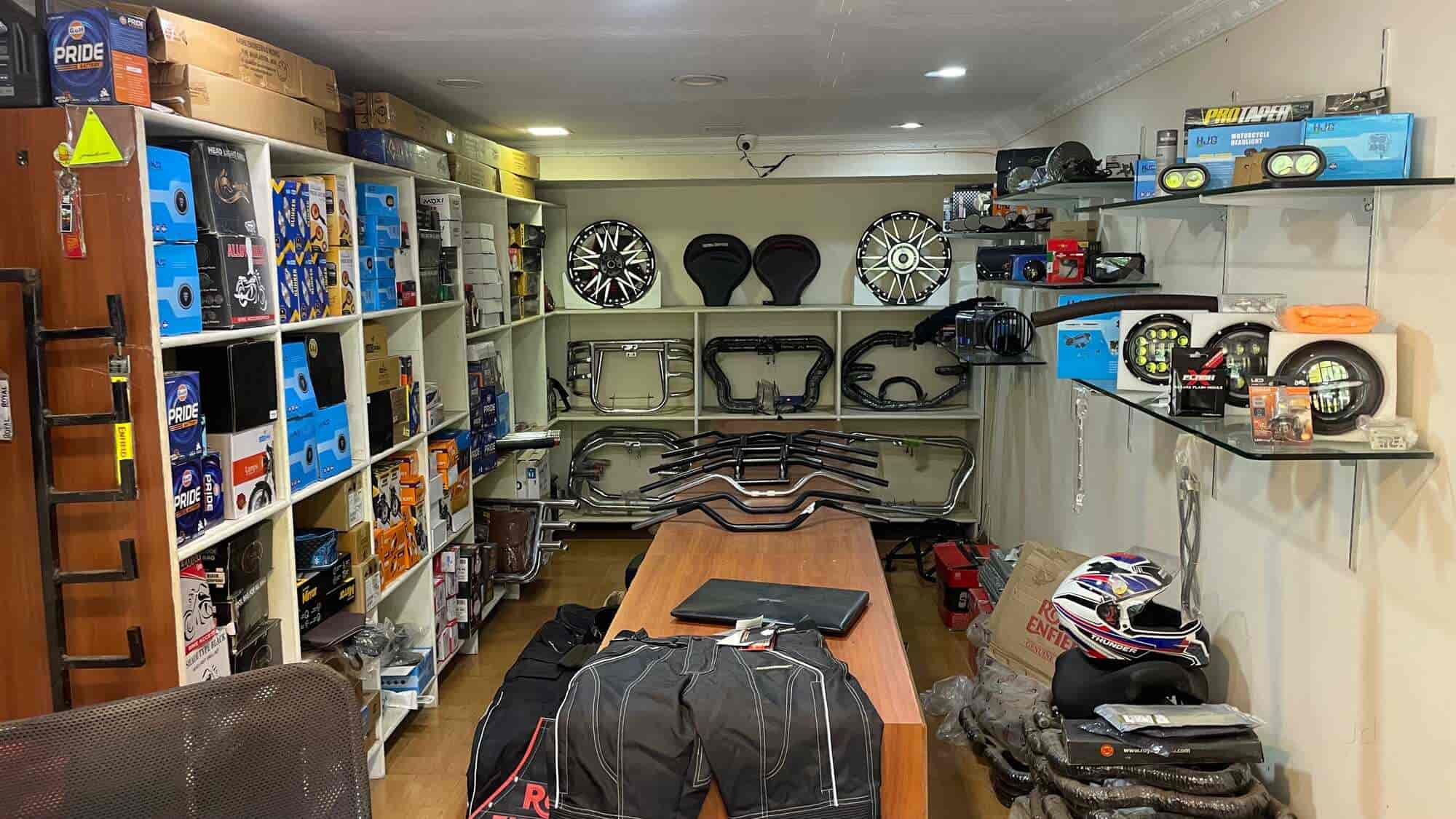Comprehending the Crucial Parts of a Motorcycle: A Comprehensive Guide for Lovers
For motorcycle enthusiasts looking to boost their riding experience and guarantee their bikes run smoothly, comprehending the vital elements of a bike is critical. Each element, from the engine's detailed operations to the vital role of the stopping systems, not only influences performance but additionally security and convenience.
Engine Parts

The camshaft plays an essential function in regulating the timing of the engine's valves, guaranteeing the exact opening and closing essential for efficient gas and air consumption, in addition to exhaust expulsion. This timing is important to maintaining optimal engine performance and efficiency. Additionally, the carburetor or fuel injection system, relying on the bike model, is accountable for mixing air with fuel in the appropriate ratio for burning.
The air conditioning system, either air or liquid-based, functions to preserve the engine's temperature level within functional restrictions, avoiding overheating and guaranteeing durability - motorcycle shop. Each element, diligently made and integrated, adds to the seamless operation of the engine, specifying the motorbike's power result and overall efficiency
Transmission System
Essential to the motorbike's capability, the transmission system makes certain reliable power transfer from the engine to the wheels. This system comprises numerous vital parts, consisting of the clutch, transmission, and last drive, each playing an essential duty in converting the engine's power right into motion. The clutch, typically run by a hand lever, offers to involve and disengage the engine from the transmission, enabling smooth equipment modifications and controlled acceleration.
The gearbox, frequently described as the transmission proper, has a collection of gears that cyclists can manually change via to adjust the bike's rate and torque outcome. These gears are set up in a sequence that makes it possible for the motorbike to accelerate smoothly and keep ideal engine efficiency across numerous speeds. The majority of motorbikes make use of a consecutive gearbox, needing the biker to change gears in a predetermined order.
Braking Devices
While comprehending the transmission system is key to harnessing a motorbike's power, equally vital is the capability to regulate and stop that power properly, which is where braking systems enter into play. Brakes are critical for security and efficiency, offering the motorcyclist with the necessary control to navigate different terrains and problems. Generally, bikes include 2 sorts of braking systems: disc brakes and drum brakes.
Disc brakes are more common in contemporary motorbikes due to their remarkable efficiency. This system supplies better heat dissipation, consistent performance, and enhanced stopping power, specifically in damp problems.
Alternatively, drum brakes, though much less typical, are still discovered in some motorbikes. They work by pressing brake shoes versus the internal surface area of a drum affixed to the wheel. While normally less efficient in heat dissipation and stopping power, drum brakes are simpler and more cost-effective.
Understanding these braking systems' subtleties enables bikers to keep their motorbikes correctly and appreciate the design that makes sure efficient and secure quiting.
Suspension and Guiding
Suspension and guiding systems are important parts that dramatically influence a bike's handling and experience convenience. The shock absorber, consisting of forks at the front and shock absorbers at the rear, soaks up road irregularities, enhancing security and control. Front forks, typically telescopic or upside down, compress and rebound to minimize effects, while rear shock absorbers maintain tire call with the road, important for grip and safety.
Guiding, focused around the handlebars, links the rider to the bike's directional control. The steering head bearings make certain smooth operation, permitting exact maneuverability. Correct alignment and upkeep of these bearings are essential for foreseeable steering action and reducing motorcyclist exhaustion.
The suspension's adjustability is one more critical element; preload, damping, and rebound settings enable modification to suit numerous riding styles and conditions. This flexibility is important for enhancing performance, whether navigating city roads or tackling tough trails. Developments like digital suspension systems provide real-time adjustments, improving trip high quality throughout varied surfaces.

Electric Solutions
After making certain a smooth and controlled experience via efficient suspension and guiding systems, attention turns to the electric systems, an essential facet of modern motorcycles. These systems play an important duty not just in starting the engine but likewise in powering different elements that improve the performance and security of the bike.
At the heart of a bike's electric system is the battery, which shops electric energy required for starting the engine and powering complementary systems - motocross parts nz. The generator or generator, paired with the rectifier-regulator, makes certain the battery continues to be billed while the motorbike is in operation, converting mechanical energy into electrical power and keeping voltage degrees
The visit our website ignition system, one more crucial component, is responsible for igniting the air-fuel combination in the engine's cylinders. Modern bikes usually utilize a digital ignition system, using higher effectiveness and reliability compared to traditional systems.
Lights systems, consisting of headlights, tail lights, and signs, are likewise crucial, making certain exposure and safety for the rider. Added electronic components such as sensing units, control check it out units, and presents add to advanced functions like gas shot administration, anti-lock stopping systems (ABDOMINAL), and electronic control panels, better improving the riding experience.
Final Thought
An extensive comprehension of a bike's important parts, including the engine, transmission system, stopping mechanisms, suspension, guiding, and electric systems, is indispensable for enthusiasts intending to enhance convenience, performance, and security. Mastery of these aspects enables informed decisions concerning upkeep and upgrades, inevitably enhancing the riding experience. By integrating this knowledge, bikers can guarantee their bikes run at peak efficiency and reliability, thus taking full advantage of both enjoyment and longevity of their automobiles.
For motorbike enthusiasts looking to raise their riding experience and guarantee their bikes run efficiently, recognizing the essential components of a motorcycle is critical.Important to the bike's capability, the transmission system makes certain reliable power transfer from the engine to the wheels.While understanding the transmission system is crucial to taking advantage of a bike's power, just as vital is the capacity to regulate and quit that power successfully, which is where stopping systems come right into play. Typically, motorbikes include 2 types of stopping systems: disc brakes and drum brakes.
An extensive comprehension of a motorbike's necessary elements, including the engine, transmission helpful site system, stopping devices, suspension, steering, and electrical systems, is indispensable for fanatics intending to enhance efficiency, safety and security, and comfort.
Comments on “Browse Through Our Motorcycle Shop for Specialist Suggestions and Top Quality Products”